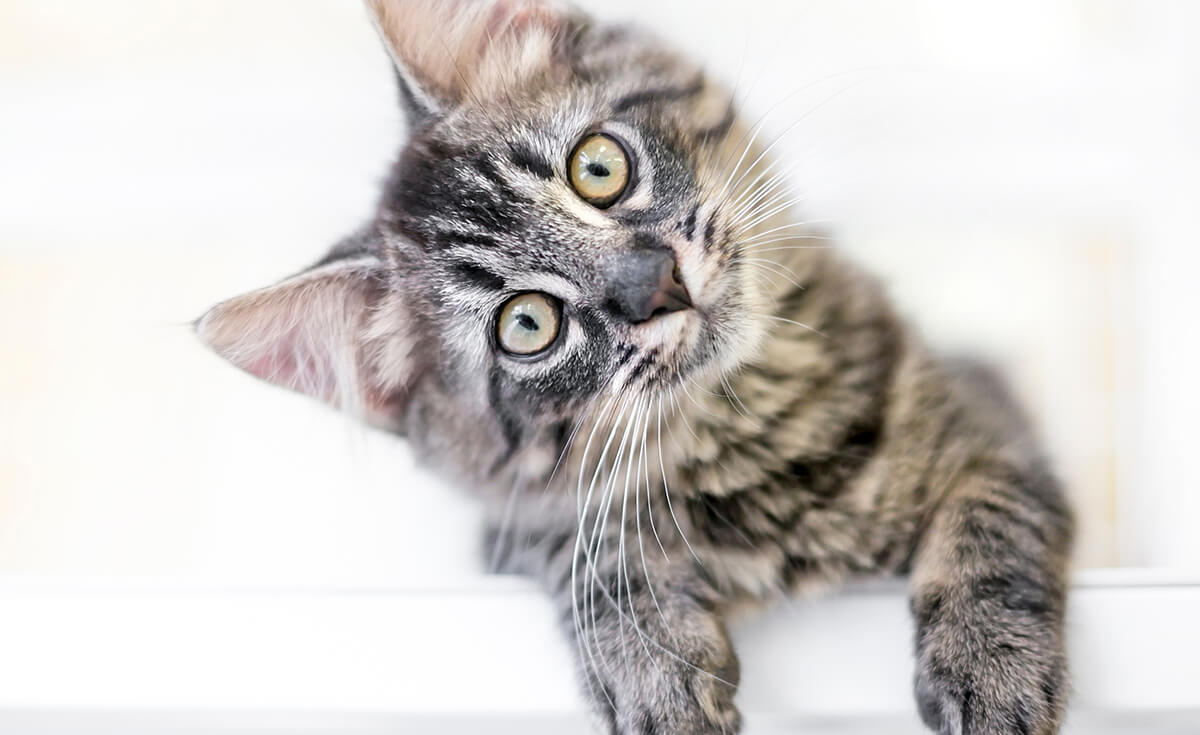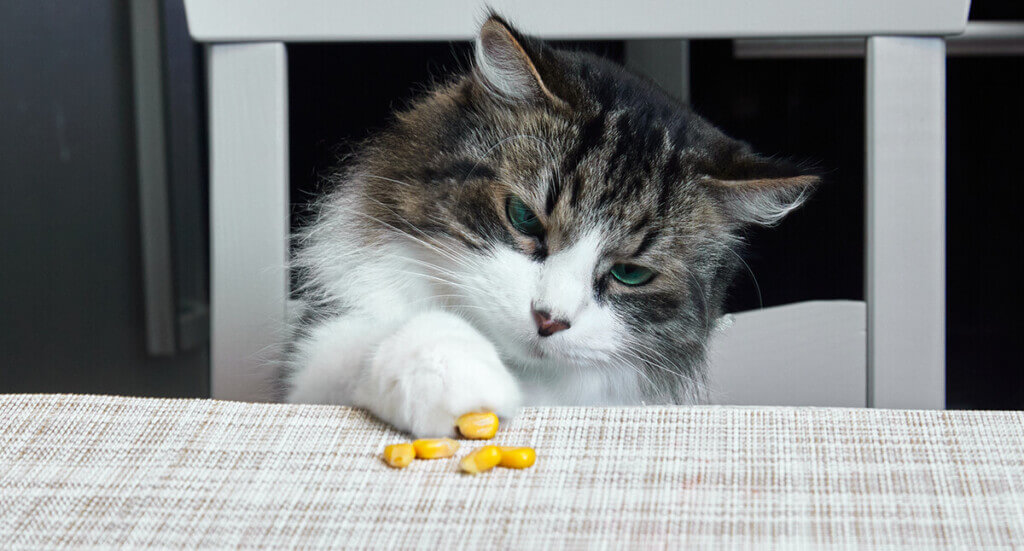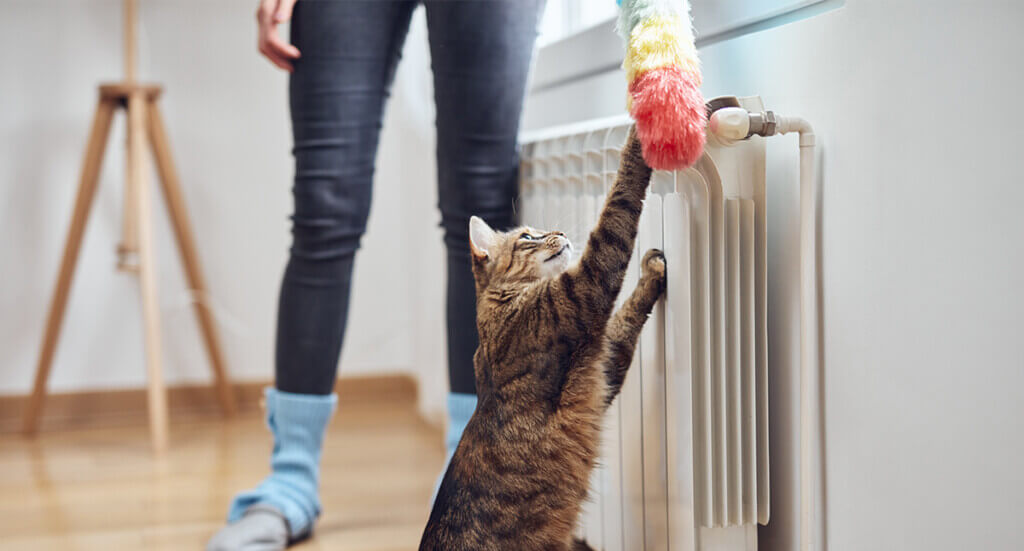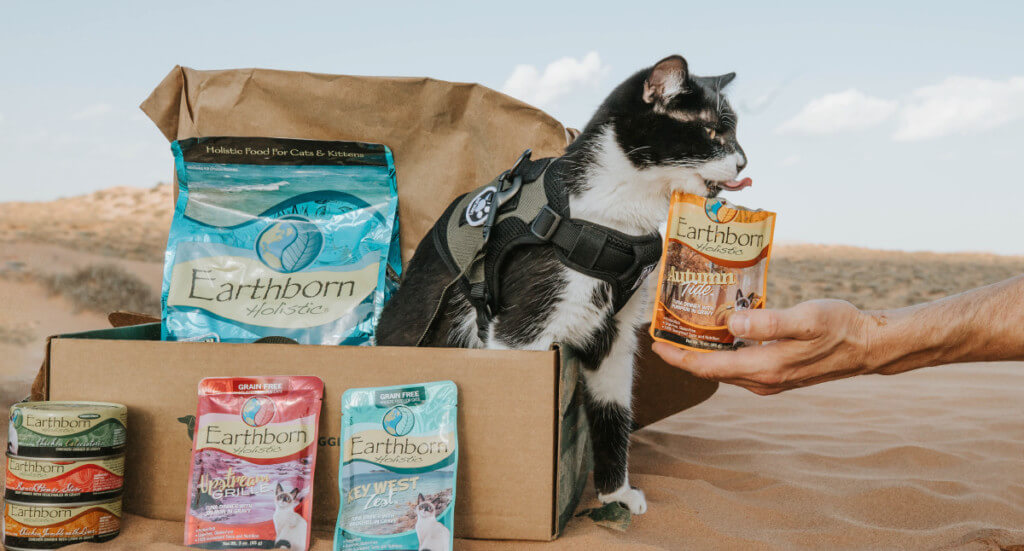Understanding and Managing Cat Food Allergies: Symptoms, Causes, and Treatment
Watching your feline friend deal with itchy skin or digestive issues is never easy. These problems can stem from various factors, like pesky parasites or even environmental triggers. But have you ever considered that food allergies may be the unexpected culprit behind your cat’s discomfort?
In this article, we’ll take a closer look at cat food allergies and explore the symptoms, causes, and treatment of this uncomfortable condition. By the end, you’ll have a clearer understanding of whether your kitty may be suffering from food allergies and the steps you can take to help them.

Understanding Cat Food Allergies
A cat food allergy is an adverse reaction of the immune system to certain ingredients in a cat’s diet – similar to how some people react to peanuts or shellfish. In cats, this can lead to symptoms like skin irritation or gastrointestinal issues such as vomiting and diarrhea.
In the following sections, we’ll dive into the causes of these allergies, identifying common dietary triggers. We’ll also discuss the range of symptoms to look out for and the process of diagnosing these allergies, which often involves an elimination diet or allergy testing. This knowledge is vital for any cat parent looking to address and manage a cat food allergy effectively.
Causes
Food allergies in cats often have a genetic component, with certain breeds thought to be more susceptible. These allergies typically manifest as digestive issues or skin irritation.
A key factor in food allergies is the protein content in a cat’s diet. Common ingredients like beef, dairy, and fish contain proteins that can trigger allergic reactions. In these cases, the cat’s immune system mistakenly identifies certain proteins as a threat and triggers an allergic response.
Interestingly, some cats develop food allergies to ingredients that they’ve eaten without issues for a long time. This sudden sensitivity highlights the unpredictable nature of food allergies in cats.
Environmental factors, such as pollutants, can also play a role by impacting a cat’s immune system, potentially making them more prone to allergies. Understanding these factors is the first step in effectively managing a cat’s food intolerance or sensitivities.
Symptoms
Identifying the symptoms of cat food allergies is crucial so you can get your cat the help they need. Here are some of the most common signs and symptoms of the condition:
- Cats may develop itchy skin, often leading to excessive scratching or grooming. Inflammation and redness can occur, especially around the head and neck.
- Recurrent ear infections or constant head shaking might be signs of an allergy affecting a cat’s ears.
- Watch out for digestive issues like vomiting or diarrhea. These can indicate gastrointestinal upset caused by a food allergen.
- Bald patches or hair loss can result from persistent scratching and might signal an allergic reaction to a dietary ingredient.
- Sneezing, coughing, or wheezing occasionally points towards feline food allergies. Your vet should evaluate these respiratory symptoms to determine their cause.
- Swollen paws, often accompanied by excessive licking, can be telltale signs of an allergic reaction in cats.
- Eye discharge is another symptom to watch for in cats dealing with food allergies. If you observe your cat’s eyes watering more than usual or appearing red, it could be a response to an allergen in their diet.
- Changes in appetite are also key indicators. Cats experiencing food sensitivities may eat less, as they might feel nauseous or suffer from stomach pain after eating. This change in eating habits can be a subtle yet important sign of a dietary issue.
Diagnosis
Diagnosing food allergies in cats requires careful attention and sometimes a bit of detective work. Your vet will start with a thorough physical examination to identify any common signs of food allergies, like stomach upset or skin issues.
Blood tests and skin patch tests can also be helpful, but they’re not always conclusive. For this reason, the best approach is usually an elimination diet. This means feeding your cat a simple diet without common allergens for several weeks. The goal is to remove the usual foods and see if the symptoms improve.
Common Allergens and Triggers
Now that we’ve looked at the causes, symptoms, and diagnosis of food allergies in cats, let’s take a closer look at some of the most common allergens and triggers.
Ingredients to Avoid

Certain ingredients are best avoided in a cat’s diet as they can be harmful to their health and may trigger allergic reactions. These include:
- Corn. This ingredient contains complex carbohydrates and protein structures that can trigger allergic reactions in cats.
- Wheat. Wheat contains gluten, which some cats are unable to tolerate well.
- Dairy. Most cats lack sufficient lactase, the enzyme needed to digest lactose in dairy, making dairy products common allergens.
- Soy. Soy is rich in compounds that can be allergenic to some cats, leading to reactions due to its protein content.
- Artificial additives. Preservatives, colorings, and flavorings are often not natural to a cat’s diet, making them potential allergens for sensitive cats.
While proteins like beef and fish are essential and generally healthy for cats, they can also be allergenic in some cases. But it’s best not to eliminate these protein sources unless they’re confirmed to cause issues in your cat. Always consult with a veterinarian if you suspect a food allergy to determine the most suitable diet for your cat’s health.
Genetic Factors
As we touched on earlier, genetic factors play a crucial role in determining a cat’s susceptibility to food allergies. Certain breeds have been found to be more prone to developing food sensitivities, such as Siamese and Devon Rex cats.
Understanding the genetic predisposition of your cat can help in identifying potential allergens and managing their diet effectively. One way to gain insight into your cat’s genetic predisposition is through pet DNA kits. These kits can provide valuable information about your cat’s breed and potential health risks, including a tendency towards certain food allergies.
Armed with this knowledge, you can work closely with your vet to develop a dietary plan that suits your cat’s specific needs. A tailored approach, considering both the breed and individual health of your cat, ensures they get the right nutrition without aggravating any allergies.
Environmental Triggers
Environmental factors can play a significant role in aggravating cat food allergies. Common triggers like pollen, dust mites, mold, and household chemicals can lead to various allergy symptoms.

For cats already dealing with food allergies, these environmental elements can add to their discomfort. That’s why it’s important to minimize their exposure to such triggers as much as possible.
Creating a clean, allergen-reduced environment at home is key to supporting your cat’s health. Regular cleaning to remove potential allergens, reducing the use of indoor pollutants, choosing hypoallergenic bedding for your cat, and ensuring good ventilation in your home can all make a big difference. These steps can help lessen the impact of environmental triggers on your cat’s allergic reactions.
Treating Cat Food Allergies
The most common methods for treating food allergies in cats include hypoallergenic diets, elimination diets, and medications or other treatments. In this section, we’ll explore how each of these methods works and how they can help your kitty.
Switching to a Hypoallergenic Diet
A hypoallergenic diet is specially designed to minimize the chances of triggering your cat’s food allergies. These diets typically exclude common allergens like dairy, beef, and wheat, which are known to cause problems in sensitive cats.
Instead, they include novel proteins and carbohydrates – ingredients your cat hasn’t been exposed to before, and are therefore less likely to provoke an allergic reaction. Feeding your cat a hypoallergenic diet helps soothe their digestive system and reduces the risk of allergic responses.
Importance of an Elimination Diet
Earlier, we mentioned elimination diets as a key method for treating cat food allergies. This approach becomes particularly useful when a hypoallergenic diet alone doesn’t solve the problem. An elimination diet (or food trial) involves removing potential allergens from your cat’s diet, like grains, dairy, and certain proteins, for about 8-12 weeks. This helps your vet pinpoint exactly what’s causing the allergic reactions.
During this diet, you’re basically conducting an experiment to find the root cause of your cat’s food allergies. After the 8-12 weeks, you slowly reintroduce each ingredient back into their diet, one at a time, while watching for any negative reactions. This step-by-step process is vital in figuring out which foods are safe for your cat.
By methodically eliminating and reintroducing foods, you can clearly understand your cat’s dietary sensitivities. This approach helps create a personalized diet plan for your cat based on their specific needs without having to guess what’s causing their allergies.
Medications and Other Treatments
Cats with food allergies may require medications or other treatments to alleviate their symptoms. These can include:
- Antihistamines. These medications can help reduce itching and inflammation caused by allergic reactions in cats.
- Corticosteroids. Used to control severe inflammation and itching caused by food allergies. These drugs can cause side effects, so it’s important to discuss with your veterinarian.
- Immunotherapy. Also known as allergy shots, this treatment involves injecting small amounts of allergens under the cat’s skin to desensitize their immune system over time.
- Fatty acid supplements. Omega-3 and omega-6 fatty acids can help improve your cat’s skin health and reduce inflammation associated with food allergies.
- Topical treatments. Shampoos, sprays, or ointments may be recommended for cats with skin irritation caused by food allergies.
While these medications and treatments can be effective in managing symptoms of food allergies in cats, it’s crucial to consult with your veterinarian before starting any of them.
Your vet can provide guidance on the best treatment options for your cat’s specific condition and monitor any potential side effects. They can also help integrate these treatments with dietary changes for a comprehensive approach to managing your cat’s food allergies, ensuring the best care and quality of life for your feline friend.
Managing Cat Food Allergies
Once you’ve identified and started treating your cat’s food allergies, managing them becomes the next important step. In this section, we’ll explore how to keep your cat’s allergies under control. This includes taking preventive measures, providing proper nutrition, scheduling regular checkups with your veterinarian, and making necessary lifestyle adjustments for your feline friend.
Prevention
To prevent cat food allergies, it’s essential to be proactive and attentive to your cat’s diet and environment. Here are some simple tips to help you get started:
- Food diary. Keep a detailed record of what your cat eats and any reactions they might have. This can be invaluable in identifying foods that cause problems.
- Introducing new foods. When adding new ingredients to your cat’s diet, make sure to do it slowly. This way, you can watch for any adverse reactions and easily pinpoint potential allergens.
- Veterinary consultation. Regularly talk with your veterinarian about your cat’s diet. They can offer personalized advice based on your kitty’s health history and specific needs.
- Environmental control. Minimize your cat’s exposure to environmental allergens like dust, pollen, and mold that can exacerbate cat food allergies.
- Hydration. Ensure your cat has constant access to fresh water. Good hydration is important for overall health and helps support the immune system.
By following these steps, you can significantly reduce the risk of food allergies in your cat and contribute to their long-term health and comfort.
Proper Nutrition
Always feed your cat a high-quality diet such as Earthborn Holistic cat food to support their overall health and reduce the risk of food allergies. Our recipes contain limited ingredients and avoid common allergens like corn, soy, and wheat. The simpler the ingredient list, the easier it is to manage potential allergies.

Earthborn Holistic cat food offers a variety of nutritious options for your feline friend. Whether your cat prefers wet or dry food, our recipes are crafted to elevate their dining experience. Made with high-quality proteins and a blend of antioxidant-rich fruits and vegetables, each meal is designed to deliver both taste and nutrition.
Regular Checkups
Make sure your cat receives regular checkups with your veterinarian to monitor their food allergies and overall health. These checkups allow your vet to detect any changes in symptoms and adjust treatment if needed, preventing potential complications.
Regular checkups are crucial for managing your cat’s food allergies effectively and ensuring they lead a happy, healthy life.
Lifestyle Adjustments
Effectively managing your cat’s food allergies often involves making some changes to their daily routine and environment. Here are a few key adjustments to consider:
- Maintaining a clean home. Regularly cleaning your home helps reduce environmental allergens like dust and pollen that can worsen allergy symptoms. Use hypoallergenic cleaning products and consider air purifiers to maintain cleaner indoor air.
- Regular grooming and bathing. Groom your cat frequently and use a hypoallergenic shampoo for baths. This helps to remove allergens from their fur and skin and can reduce skin irritations associated with food allergies.
- Creating a stress-free environment. Stress can exacerbate allergy symptoms in cats. Try to create a calm and stable environment at home. This can include providing quiet resting places, engaging toys, and consistent daily routines to keep your cat relaxed.
- Family involvement in cat care. It’s important that everyone in the household understands and follows the recommended diet and care plan for your cat. Consistency in feeding and avoiding forbidden foods are crucial in managing allergies.
- Controlling outdoor exposure. If your cat spends time outdoors, consider creating a controlled outdoor environment or limiting their time outside. This reduces their exposure to potential allergens like pollen, grasses, and certain plants that can contribute to allergy symptoms.
- Monitoring food sources. Be vigilant about what your cat eats. This includes being cautious about treats and avoiding table scraps. Stick to the cat foods recommended by your veterinarian.
By incorporating these lifestyle adjustments, you can create a supportive environment that helps manage your cat’s food allergies more effectively and enhances their overall quality of life.
Key Takeaways
- Causes. Cat food allergies are often genetic and can be triggered by proteins in the diet.
- Symptoms. Common signs include itchy skin, digestive issues, respiratory symptoms, and changes in appetite.
- Diagnosis and Treatment. Diagnosis typically involves a vet’s examination and may include an elimination diet. Treatment options include hypoallergenic diets, medications, and lifestyle changes.
- Prevention. Key preventive measures include feeding high-quality, limited ingredient diets, regular veterinary checkups, and minimizing exposure to environmental allergens that can exacerbate allergy symptoms.
- Management. Effective management includes regular grooming, creating a stress-free environment, and ensuring all family members adhere to the cat’s dietary plan.
How Can You Ensure the Best Care for Your Cat with Food Allergies?
Navigating the challenges of cat food allergies is all about being attentive and responsive to your feline friend’s needs. With the right approach to diet, care, and environment, you can help your cat lead a comfortable and happy life, even with food sensitivities.
Remember, your vet is a valuable partner in this journey, offering expert advice tailored to your cat’s unique situation. By working together, you can make a significant difference in managing your cat’s food allergies effectively.




